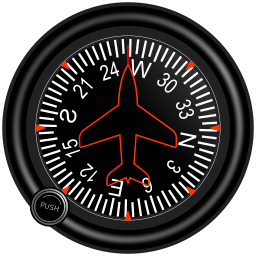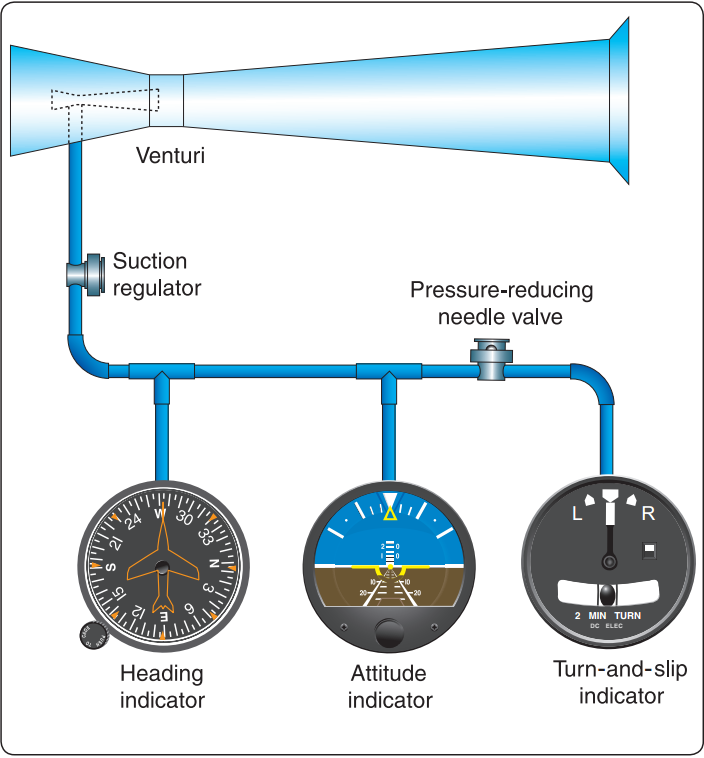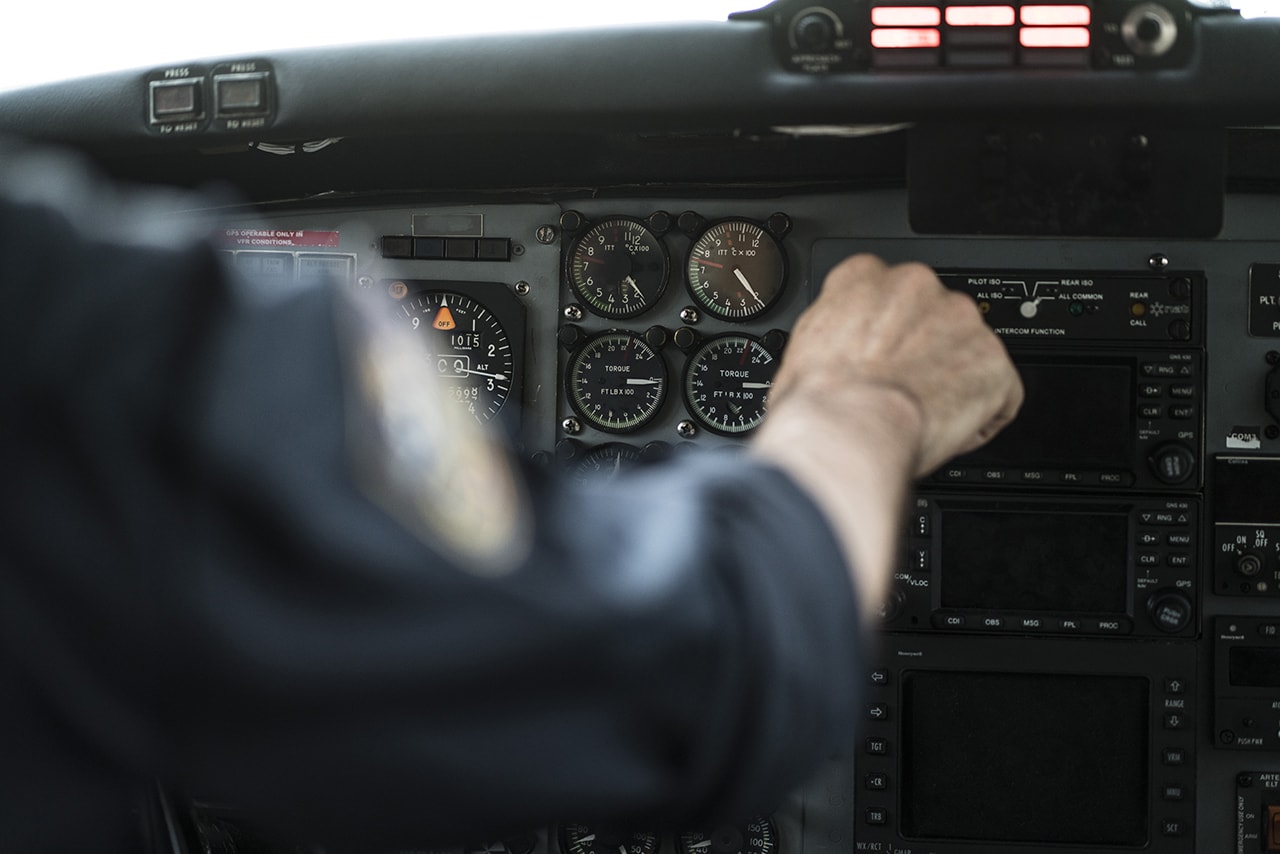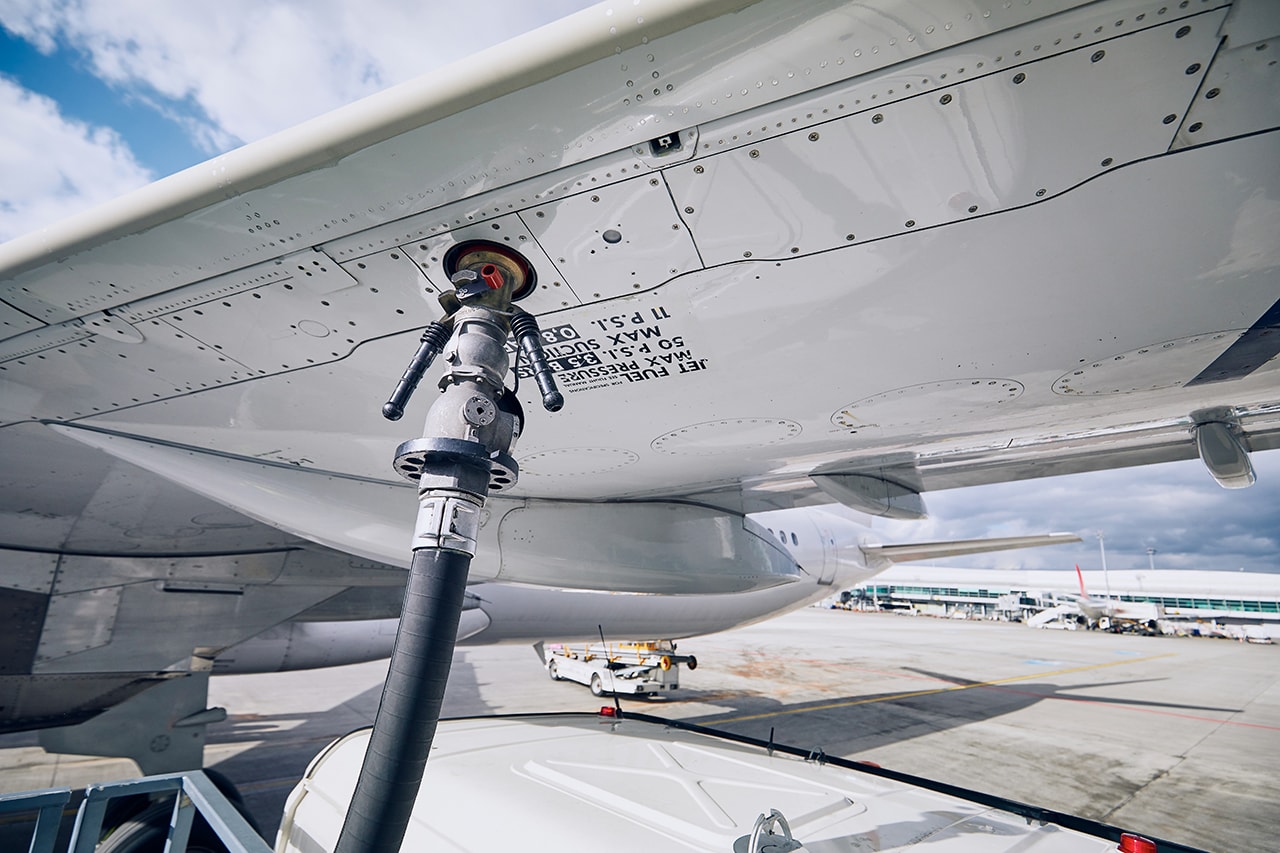How Does a Heading Indicator Work and What You Need to Know
Oct 01, 2024
Understanding Heading Indicators
A heading indicator is a crucial flight instrument that provides pilots with the aircraft’s magnetic heading, allowing them to navigate safely and efficiently.
Also known as a directional gyro, the heading indicator is one of the six primary flight instruments, often referred to as the pilot’s six pack.
At its core, the heading indicator works by using a gyroscope to maintain a stable reference point, unaffected by the Earth’s magnetic field.
This stability is essential for accurate navigation, especially in conditions where a magnetic compass might be unreliable due to magnetic interference or turbulence.
The heading indicator displays the aircraft’s heading relative to magnetic north, which is vital for maintaining the correct course.
Pilots rely on this instrument to make informed decisions, ensuring they stay on track and avoid potential hazards. However, like any instrument, heading indicators are not without their quirks.
Common errors such as mechanical drift and apparent drift can affect their accuracy.
Mechanical drift occurs due to friction within the instrument, causing it to slowly deviate from the true heading. Apparent drift, on the other hand, is influenced by external factors like the rotation of the earth.
Understanding these potential errors and knowing how to correct them is crucial for pilots. Regular calibration and alignment with the aircraft’s magnetic compass are necessary to ensure the heading indicator remains accurate and reliable.
The heading indicator is an indispensable tool in aviation, providing pilots with the precise directional information needed for safe and efficient flight.
By understanding how it works and being aware of common heading indicator errors, pilots can make the most of this essential instrument.
How Heading Indicators Work
The heading indicator is a clever instrument based around a gyroscope, powered by a vacuum pump. The precision comes from the gyroscope spinning at nearly 15,000 rpm.
This fast spin means the gyroscope is stable and can measure how much the aircraft has turned around its axis. This is important so pilots can know where they are pointing.
As the aircraft turns the heading indicator captures the tiny movements and translates them into a reading on the gauge.
By measuring the aircraft’s orientation relative to its stable gyroscopic axis, the heading indicator gives an instant and continuous reading of the heading.
This is then displayed on the instrument panel so the pilot can make informed decisions in real time.
At the heart of the instrument is a compass card, marked in degrees for a full 360 degrees. The heading indicator has a small airplane silhouette superimposed over the compass card, showing the aircraft’s current course.
This makes navigation easy as the pilot can simply align the plane’s nose with the bearing, no complicated calculations required. However, older heading indicators often face readability challenges due to wear and tear, inadequate maintenance, and outdated design, which can affect visibility and accuracy.
And the lubber line (the vertical line from the airplane icon across the compass card) is a reference point for accuracy.
By lining up the lubber line with the desired heading on the compass card pilots can have precise control, especially in tricky flying. That’s what makes the heading indicator a must have for safe and efficient flying.

Importance of a Heading Indicators
A heading indicator (directional gyro) is important in aviation as it shows the pilot which way the nose of the aircraft is pointing relative to the aircraft's magnetic heading, helping to determine aircraft direction with accuracy.
This helps with situational awareness so the pilot can fly the aircraft safely.
Navigational accuracy
A heading indicator gives the pilot directional information which is key to flying the course. Flying in the wrong direction can lead to disastrous consequences, making it crucial to ensure the heading indicator is accurate.
It's a simple and powerful tool to increase situational awareness to fly safely in any condition.
Regular calibration and alignment with the aircraft’s magnetic compass are necessary to ensure the heading indicator remains accurate and reliable.
Pilots must align the heading indicator with the magnetic compass and adjust it regularly to account for drift caused by factors like Earth's rotation and precession.
This stability is essential for accurate navigation, especially in conditions where a magnetic compass might be unreliable due to magnetic interference or turbulence.
The heading indicator relies on the rotation of a gyroscope inside the instrument for accurate navigation and orientation, emphasizing its role as a reference point for determining aircraft headings.
Enhancing Situational Awareness
Situational awareness is key to flying and means knowing where the aircraft is and where it’s going.
The heading indicator is a big help in keeping that aware. By giving you accurate direction, it keeps you aware of where the aircraft is.
Having situational awareness means you can make quick and effective decisions in tough conditions.
The heading indicator’s data supports that and is part of the cockpit. That means safer and more efficient flying.
Reliability in Aviation
Heading indicators are a key tool in aviation because they are reliable. Unlike magnetic compasses they don’t fluctuate with magnetic fields. However, as one approaches the North or South Pole, the effect of apparent drift increases significantly, reaching a maximum rate of 15° per hour.
This is important for pilots who need accurate steady info to stay on course.
In flight the consistency of a heading indicator gives a pilot confidence and situational awareness.
It allows pilots to focus more on navigating and being safe even in tough conditions.
This reliability not only contributes to smoother flights but also enhances overall flight safety and efficiency.

How it works
Heading indicators use a gyroscope to give you steady and reliable direction. This mechanical method means you can trust the numbers on the heading indicator displays.
But to stay precise you need to adjust them manually. Be aware of when to do so and you’ll have accurate equipment for safe and effective flying.
Understanding how the heading indicator works is crucial for effective navigation and ensuring that the pilot has the necessary information at all times.

Comparison with Magnetic Compass
The magnetic compass has been the bread and butter of aviation for years, the primary way pilots determine their aircraft’s direction.
It doesn’t care about modern digital systems or power outages in some environments. The simplicity and reliability of the magnetic compass has made it a fixture in cockpits around the world.
While both the magnetic compass and heading indicator show pilots their aircraft’s direction, they do it in different ways.
A magnetic compass uses the Earth’s magnetic field to align itself north, a heading indicator uses a gyro.
This is key because it affects how these instruments work in different conditions and their susceptibility to errors.
One of the biggest issues with the magnetic compass is that it’s vulnerable to external factors like banks, turbulence and dip errors which can give you wrong readings.
Banks can cause the compass to tilt and lose accuracy, turbulence can cause the compass card to swing back and forth making navigation harder.
Dip errors, caused by the Earth’s magnetic inclination, can affect compasses in higher latitudes where horizontal alignment is distorted.
Using a magnetic compass with a heading indicator gives pilots dual assurance of accuracy and reliability.
You get the robust and stable heading indicator that’s not affected by the issues that plague the magnetic compass and still have the flexibility of an independent magnetic reference point.
This combination of both instruments plays to the strengths of each, so you can navigate reliably in all flight conditions and make aviation safer overall.

Importance of Accurate Heading Information
Heading info is key to safe flying. This data helps pilots be precise with their directional control which is safety. Knowing the heading helps pilots stay on track with their planned route.
The heading indicator is the tool for this. It gives real time data of the current heading so pilots can make decisions to stay on course.
It’s a stable reference in times of turbulence. Without heading info the risk of going off track is huge. Off track can lead to dangerous situations including colliding with other aircraft or obstacles.
Having heading info keeps things orderly and predictable for flight safety.
The heading indicator is essential in aviation. By providing reliable info it allows pilots to fly correct routes consistently as one of many flight instruments. This can help avoid hazards and get everyone to their destination safely.
Common Errors and Troubleshooting
Heading indicators can be wrong due to several common mistakes. These mistakes are parallax, precession and gimbal error which affect navigation data.
Understanding these mistakes is key to troubleshooting heading indicator errors that can affect navigation data.
Mechanical drift is a type of error caused by friction in the instrument. This drift causes the heading indicator to slowly drift away from the true heading and needs to be checked regularly to stay accurate.
Apparent drift is caused by external factors like acceleration and precession. These can temporarily change the heading indicator reading and is a challenge for pilots who need precise navigation.
To correct these mistakes pilots need to reset their heading indicators. This is done by aligning the indicator with the aircraft’s magnetic heading using a magnetic compass for calibration.
Regular checks will keep the heading indicator accurate and trustworthy. By understanding and controlling these errors pilots will have safer navigation and better flight operations.

Maintenance and Calibration
Keeping the heading indicator accurate is key to safe flying. Regular checks ensure the instrument is working and not leading pilots off course. This is crucial to navigation.
Checking regularly allows pilots to catch any defects or faults early. Catching problems at this stage prevents minor issues becoming major ones that could put flight safety at risk. This is being proactive.
Calibration is another important part of heading indicator maintenance. By getting the instrument aligned, pilots get accurate readings for the whole flight.
This is important not to have errors caused by a misaligned heading indicator.
Doing maintenance ensures the heading indicator keeps working. This involves inspection and alignment both are important to keep the instrument precise. A well-maintained heading indicator means the whole flight is safer.
In the end, regular maintenance and calibration gives pilots the confidence to navigate. By doing so pilots are safe not only themselves but also their passengers and that’s the success and fun of every flight.
Alternative Navigation Methods
When headings fail, pilots have other ways to fall back on. One of the old school ways is the magnetic compass.
This simple but effective tool tells you the aircraft’s heading by aligning with the Earth’s magnetic field so it’s a backup for when all other systems fail.
In addition to the magnetic compass, Global Positioning System (GPS) is another modern option.
GPS gives you precise location data and allows you to navigate accurately by triangulating signals from satellites so it’s a key tool in today’s flying world.
There are other navigation instruments too that pilots can use. These may be inertial navigation systems or radio navigation aids which are backups to ensure safe and accurate headings.
Pilots need to be trained and practiced in using these other methods in different situations.
Regular training and practice of these tools is key to being prepared in emergency situations.
In the end, knowing and using these other navigation methods makes aircraft operation safer and more reliable.
With the right knowledge and skills, pilots can stay situational aware and on heading even in tough conditions.

Integration with Other Navigation Instruments
The heading indicator is a key part of an aircraft’s nav system and helps pilots during flight. Its main job is to keep the course and give pilots a heading reference to fly safe.
This doesn’t work alone. It integrates with other nav systems including GPS which gives location data through satellite triangulation and radio nav aids which give positional awareness through radio signals.
Together they make a robust network to fly safe.
Another instrument that works with the heading indicator is the attitude indicator, which provides crucial information about the aircraft's orientation relative to the horizon.
Used with the heading indicator it makes the nav system more robust especially when the electronic systems fail.
The combination of these instruments gives you all the navigational data you need to have situational awareness.
This gives you the ability to make immediate decisions and adjust your flight path as needed and fly stable and efficient.
So, there you have it, the heading indicator and other nav tools work together to make flight safer.
Pilot training on these integrated systems ensures you’re ready for any flying condition and safe in this ever-changing aviation world.

Mastering the Heading Indicator
To be precise in navigation you need to master the heading indicator. First you need to understand how it works.
Pilots need to know how it shows the aircraft direction from magnetic north and how it helps you keep a steady heading in flight.
Proper alignment and interpretation of the heading indicator is key. Pilots should calibrate regularly to get accurate readings.
This means aligning it with the magnetic compass before every flight to counter gyroscopic precession.
You also need to be aware of the common errors of the heading indicator. Mechanical faults or misalignment can give you inaccurate readings.
Pilots should know how to troubleshoot and correct any deviations and stay on course.
By mastering these, you can have precise directional control of the aircraft. This will make navigation more accurate and safer and more efficient.
Precise control is more important in bad weather or busy airspace where reliable instruments are critical.
So mastering the heading indicator gives you the confidence to make decisions. It keeps you on course and makes overall flying safer.
Continuous training and practice will hone these skills and make you a better pilot.
Navigational Success: Why the Heading Indicator Matters
The heading indicator is a vital tool in aviation, it’s your guide to staying on course during flight. This instrument allows you to track the aircraft’s orientation with precision so you stay on the right path.
By giving you accurate directional information the heading indicator helps you manage navigation challenges.
This is especially important in complex or unknown airspace where direction is key to safety and efficiency.
Understanding and using the heading indicator is key to flying successfully. With knowledge and use you can fly safely even in the toughest conditions.
Practice and learning with the heading indicator builds your confidence and flexibility. So you can make better decisions and fly safer.
Conclusion
Heading indicators are a vital part of aviation, giving you the ability to accurately determine your direction.
They give you steady numbers, so you don’t get the fluctuations of a magnetic compass and therefore safer and more efficient flying.
This stability lets you fly with confidence even in tough conditions and smoother and safer flights.
The effectiveness of heading indicators is in the mechanical bit, with gyroscopes that give you consistent data.
While you need to adjust them manually occasionally, they are essential for precise navigation and situational awareness.
In short, heading indicators are key to flying the route, hence they are essential in aviation as part of the overall heading reference system.

